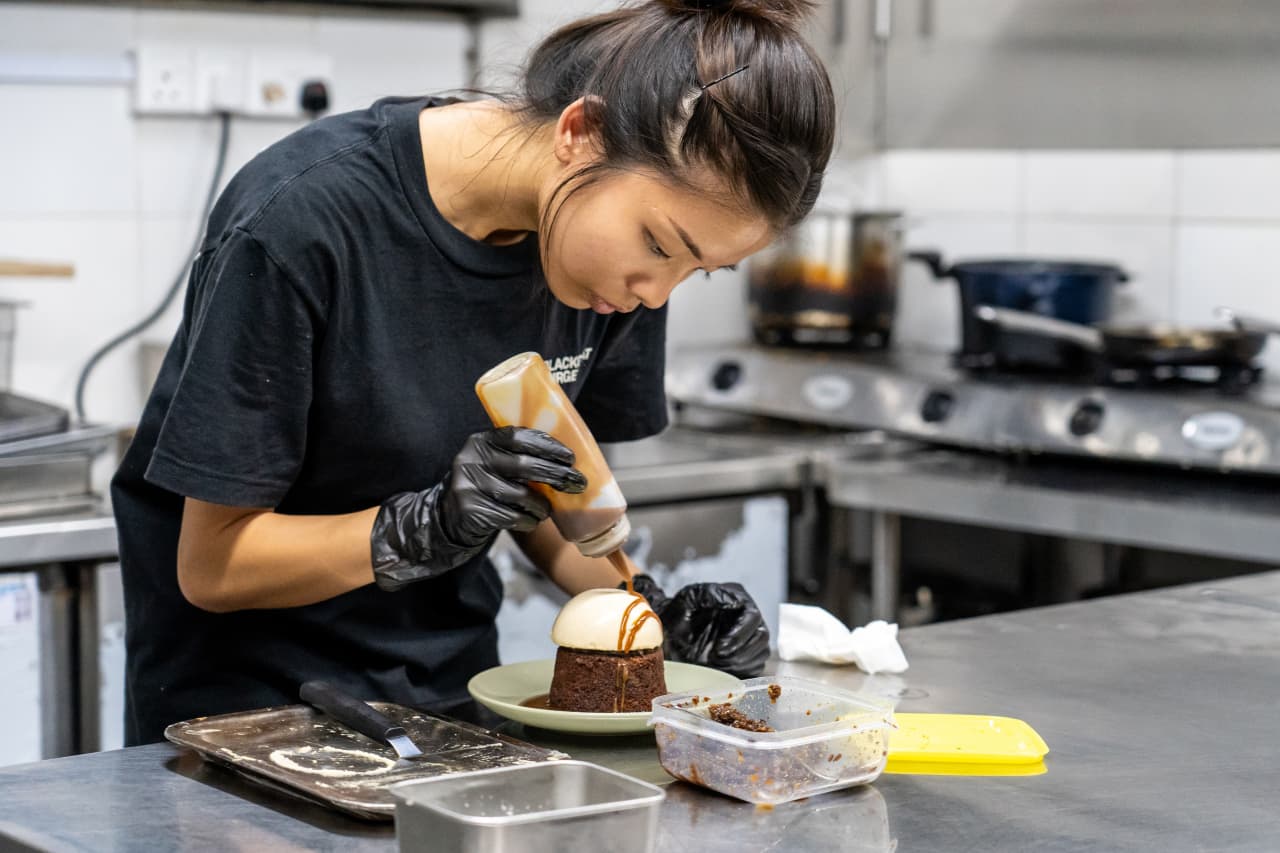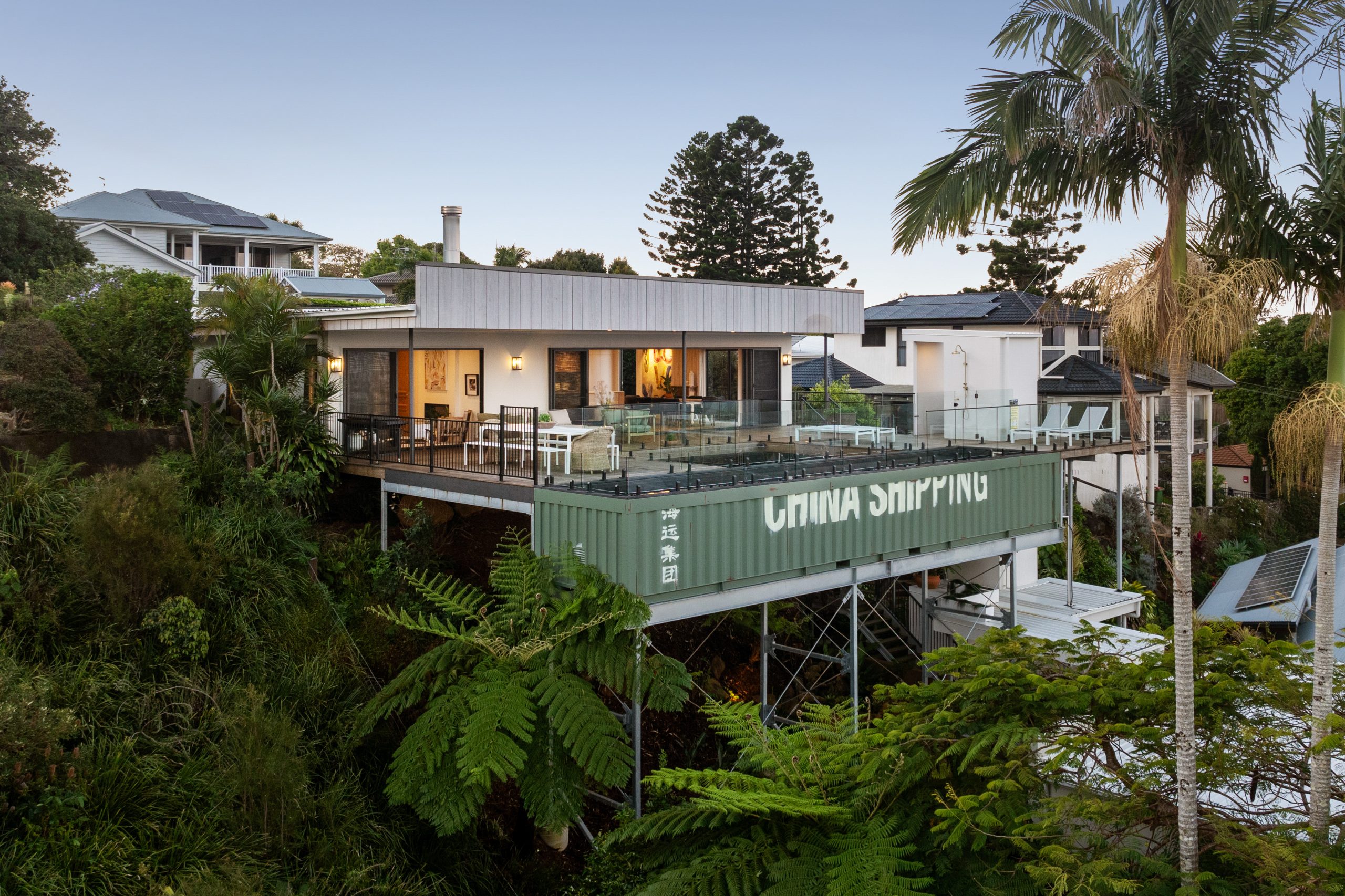American Express Travel President Talks About the Post-Pandemic Vacation Boom
Audrey Hendley, as the president of American Express Travel, is attuned to how trips have evolved in recent years and what vacationers are seeking on those getaways.
The organisation is one of the largest travel and lifestyle networks in the world and spans 7,000 travel consultants in 23 countries. Its global footprint includes 1,400 lounges in 140 countries and more than 1,500 properties in its collection of Fine Hotels + Resorts.
Business at American Express Travel is bouncing back from the pandemic slump: In the second quarter of this year, bookings through the network across 138 million American Express cards that are currently in use reached pre-Covid levels.
Hendley, who lives in Westchester, New York, speaks to Penta about the most in-demand travel destinations, the new movement of traveling with a purpose, and her top advice for maximising any trip.
Penta: What are some travel trends you’re seeing this year?
Audrey Hendley: We have seen a notable shift in people’s interests driving travel decisions. Travellers are booking “set-jetting” trips that are inspired by shows like The White Lotus and Emily in Paris because they are increasingly inspired by pop culture.
Food also continues to impact booking decisions, with people building entire trips around reservations at incredible restaurants like Noma in Copenhagen or blocking off afternoons to do a taco tour in Mexico City. Travel has become less about the “where” and more about the “why.”
Which destinations are the most popular and what’s up and coming?
We put out a Trending Destinations list every year that highlights the places our card members are traveling to; 2023 is a mix of perennial favourites like Paris and the Florida Key, and some lesser-known destinations like Woodstock, Vermont, and Montenegro. While people are still revisiting the cities they love, we are also seeing an increase in trips to places that are off the beaten path. And as borders have opened post-pandemic, we’re seeing more trips being booked to places like Asia and Australia.
How do you think the rising cost of travel will impact decisions in 2023?
Our 2023 Global Travel Trends Report found that 80% of travellers would rather take a dream vacation than purchase a new luxury item. Our values have fundamentally shifted since the pandemic, and now, people want meaning in everything they do—travel included. They’re more purposeful.
Pre-pandemic, travel was about checking off a list of destinations you wanted to see. Now, it’s about really exploring and seeing a place in depth. Travelers will go to fewer places but see more where they do go. And they’re willing to spend on experiences and memories—what better way to create those things than travel?
How are younger generations shepherding the travel trends that we are seeing today?
As they continue to gain independence and financial freedom, millennial and Gen Z travellers are putting their stamp on modern travel trends. They want experiences, especially ones that look good in photos on social media. We are also seeing that they are extremely conscious of the impact their trips have on the environment and the communities they visit. They are pushing the industry to be more purposeful—they want hotels that prioritise sustainability, support local economies by employing locals, and value inclusion and diversity.
Can you speak to the hallmark of a great hotel and a great hotel stay?
It’s a property that knows you when you’re there. The staff addresses you by name and makes you feel at home. They offer exceptional service, a luxury that’s relaxed and infuses your stay with personal touches. I was in Paris on a recent work trip, for example, and stayed at the Maison Delano, one of the newest properties in the city. I walked into my room and found a charger that worked in France waiting for me as a welcome gift. It was such a simple gesture but meant so much on a work trip.
The Centurion Lounge Network has been regarded as one of the most luxurious airport lounge experiences. What sets it apart from other airport lounges?
I think it’s the quality of the product. We try to offer elevated food and local flavours. The lounge at San Francisco Airport, for example, features wines from nearby Napa Valley, and in Seattle, home to a big coffee culture, we have a coffee and espresso bar. With cuisine, we try to use chefs from that location to create menus, and they’re all different by location. We also try to use as many local producers as possible.
In addition, we offer high-touch services like chair massages and manicures in some lounges.
As a globetrotter yourself, what are some of your best travel tips?
I like to travel like a local, especially to touristy destinations. I always look for the small shops and restaurants that give me the true flavour of a destination rather than the big names where all the tourists go.
I also enjoy visiting popular destinations during the so-called off-peak season. I was in Venice [Italy] in February where the weather was glorious, and there weren’t nearly as many crowds as there are during the summer.
On business trips, I love carving out some personal time to balance the intensity of long workdays. I also start the day with some form of exercise whether it’s a run or jog—this also gives me an opportunity to see the destination.
This interview has been edited for length and clarity.
 Copyright 2020, Dow Jones & Company, Inc. All Rights Reserved Worldwide. LEARN MORE
Copyright 2020, Dow Jones & Company, Inc. All Rights Reserved Worldwide. LEARN MORE
This stylish family home combines a classic palette and finishes with a flexible floorplan
Just 55 minutes from Sydney, make this your creative getaway located in the majestic Hawkesbury region.
No trip to Singapore is complete without a meal (or 12) at its hawker centres, where stalls sell multicultural dishes from generations-old recipes. But rising costs and demographic change are threatening the beloved tradition.
In Singapore, it’s not unusual for total strangers to ask, “Have you eaten yet?” A greeting akin to “Good morning,” it invariably leads to follow-up questions. What did you eat? Where did you eat it? Was it good? Greeters reserve the right to judge your responses and offer advice, solicited or otherwise, on where you should eat next.
Locals will often joke that gastronomic opinions can make (and break) relationships and that eating is a national pastime. And why wouldn’t it be? In a nexus of colliding cultures—a place where Malays, Indians, Chinese and Europeans have brushed shoulders and shared meals for centuries—the mix of flavours coming out of kitchens in this country is enough to make you believe in world peace.
While Michelin stars spangle Singapore’s restaurant scene , to truly understand the city’s relationship with food, you have to venture to the hawker centres. A core aspect of daily life, hawker centres sprang up in numbers during the 1970s, built by authorities looking to sanitise and formalise the city’s street-food scene. Today, 121 government-run hawker centres feature food stalls that specialise in dishes from the country’s various ethnic groups. In one of the world’s most expensive cities, hawker dishes are shockingly cheap: A full meal can cost as little as $3.
Over the course of many visits to Singapore, I’ve fallen in love with these places—and with the scavenger hunts to find meals I’ll never forget: delicate bowls of laksa noodle soup, where brisk lashes of heat interrupt addictive swirls of umami; impossibly flaky roti prata dipped in curry; the beautiful simplicity of an immaculately roasted duck leg. In a futuristic and at times sterile city, hawker centres throw back to the past and offer a rare glimpse of something human in scale. To an outsider like me, sitting at a table amid the din of the lunch-hour rush can feel like glimpsing the city’s soul through all the concrete and glitz.
So I’ve been alarmed in recent years to hear about the supposed demise of hawker centres. Would-be hawkers have to bid for stalls from the government, and rents are climbing . An upwardly mobile generation doesn’t want to take over from their parents. On a recent trip to Singapore, I enlisted my brother, who lives there, and as we ate our way across the city, we searched for signs of life—and hopefully a peek into what the future holds.
At Amoy Street Food Centre, near the central business district, 32-year-old Kai Jin Thng has done the math. To turn a profit at his stall, Jin’s Noodle , he says, he has to churn out at least 150 $4 bowls of kolo mee , a Malaysian dish featuring savoury pork over a bed of springy noodles, in 120 minutes of lunch service. With his sister as sous-chef, he slings the bowls with frenetic focus.
Thng dropped out of school as a teenager to work in his father’s stall selling wonton mee , a staple noodle dish, and is quick to say no when I ask if he wants his daughter to take over the stall one day.
“The tradition is fading and I believe that in the next 10 or 15 years, it’s only going to get worse,” Thng said. “The new generation prefers to put on their tie and their white collar—nobody really wants to get their hands dirty.”
In 2020, the National Environment Agency , which oversees hawker centres, put the median age of hawkers at 60. When I did encounter younger people like Thng in the trade, I found they persevered out of stubbornness, a desire to innovate on a deep-seated tradition—or some combination of both.
Later that afternoon, looking for a momentary reprieve from Singapore’s crushing humidity, we ducked into Market Street Hawker Centre and bought juice made from fresh calamansi, a small citrus fruit.
Jamilah Beevi, 29, was working the shop with her father, who, at 64, has been a hawker since he was 12. “I originally stepped in out of filial duty,” she said. “But I find it to be really fulfilling work…I see it as a generational shop, so I don’t want to let that die.” When I asked her father when he’d retire, he confidently said he’d hang up his apron next year. “He’s been saying that for many years,” Beevi said, laughing.
More than one Singaporean told me that to truly appreciate what’s at stake in the hawker tradition’s threatened collapse, I’d need to leave the neighbourhoods where most tourists spend their time, and venture to the Heartland, the residential communities outside the central business district. There, hawker centres, often combined with markets, are strategically located near dense housing developments, where they cater to the 77% of Singaporeans who live in government-subsidised apartments.
We ate laksa from a stall at Ghim Moh Market and Food Centre, where families enjoyed their Sunday. At Redhill Food Centre, a similar chorus of chattering voices and clattering cutlery filled the space, as diners lined up for prawn noodles and chicken rice. Near our table, a couple hungrily unwrapped a package of durian, a coveted fruit banned from public transportation and some hotels for its strong aroma. It all seemed like business as usual.
Then we went to Blackgoat . Tucked in a corner of the Jalan Batu housing development, Blackgoat doesn’t look like an average hawker operation. An unusually large staff of six swirled around a stall where Fikri Amin Bin Rohaimi, 24, presided over a fiery grill and a seriously ambitious menu. A veteran of the three-Michelin-star Zén , Rohaimi started selling burgers from his apartment kitchen in 2019, before opening a hawker stall last year. We ordered everything on the menu and enjoyed a feast that would astound had it come out of a fully equipped restaurant kitchen; that it was all made in a 130-square-foot space seemed miraculous.
Mussels swam in a mushroom broth, spiked with Thai basil and chives. Huge, tender tiger prawns were grilled to perfection and smothered in toasted garlic and olive oil. Lamb was coated in a whisper of Sichuan peppercorns; Wagyu beef, in a homemade makrut-lime sauce. Then Ethel Yam, Blackgoat’s pastry chef prepared a date pudding with a mushroom semifreddo and a panna cotta drizzled in chamomile syrup. A group of elderly residents from the nearby towers watched, while sipping tiny glasses of Tiger beer.
Since opening his stall, Rohaimi told me, he’s seen his food referred to as “restaurant-level hawker food,” a categorisation he rejects, feeling it discounts what’s possible at a hawker centre. “If you eat hawker food, you know that it can often be much better than anything at a restaurant.”
He wants to open a restaurant eventually—or, leveraging his in-progress biomedical engineering degree, a food lab. But he sees the modern hawker centre not just as a steppingstone, but a place to experiment. “Because you only have to manage so many things, unlike at a restaurant, a hawker stall right now gives us a kind of limitlessness to try new things,” he said.
Using high-grade Australian beef and employing a whole staff, Rohaimi must charge more than typical hawker stalls, though his food, around $12 per 100 grams of steak, still costs far less than high-end restaurant fare. He’s found that people will pay for quality, he says, even if he first has to convince them to try the food.
At Yishun Park Hawker Centre (now temporarily closed for renovations), Nurl Asyraffie, 33, has encountered a similar dynamic since he started Kerabu by Arang , a stall specialising in “modern Malay food.” The day we came, he was selling ayam percik , a grilled chicken leg smothered in a bewitching turmeric-based marinade. As we ate, a hawker from another stall came over to inquire how much we’d paid. When we said around $10 a plate, she looked skeptical: “At least it’s a lot of food.”
Asyraffie, who opened the stall after a spell in private dining and at big-name restaurants in the region, says he’s used to dubious reactions. “I think the way you get people’s trust is you need to deliver,” he said. “Singapore is a melting pot; we’re used to trying new things, and we will pay for food we think is worth it.” He says a lot of the same older “uncles” who gawked at his prices, are now regulars. “New hawkers like me can fill a gap in the market, slightly higher than your chicken rice, but lower than a restaurant.”
But economics is only half the battle for a new generation of hawkers, says Seng Wun Song, a 64-year-old, semiretired economist who delves into the inner workings of Singapore’s food-and-beverage industry as a hobby. He thinks locals and tourists who come to hawker centers to look for “authentic” Singaporean food need to rethink what that amorphous catchall word really means. What people consider “heritage food,” he explains, is a mix of Malay, Chinese, Indian and European dishes that emerged from the country’s founding. “But Singapore is a trading hub where people come and go, and heritage moves and changes. Hawker food isn’t dying; it’s evolving so that it doesn’t die.”
This stylish family home combines a classic palette and finishes with a flexible floorplan
Just 55 minutes from Sydney, make this your creative getaway located in the majestic Hawkesbury region.






















